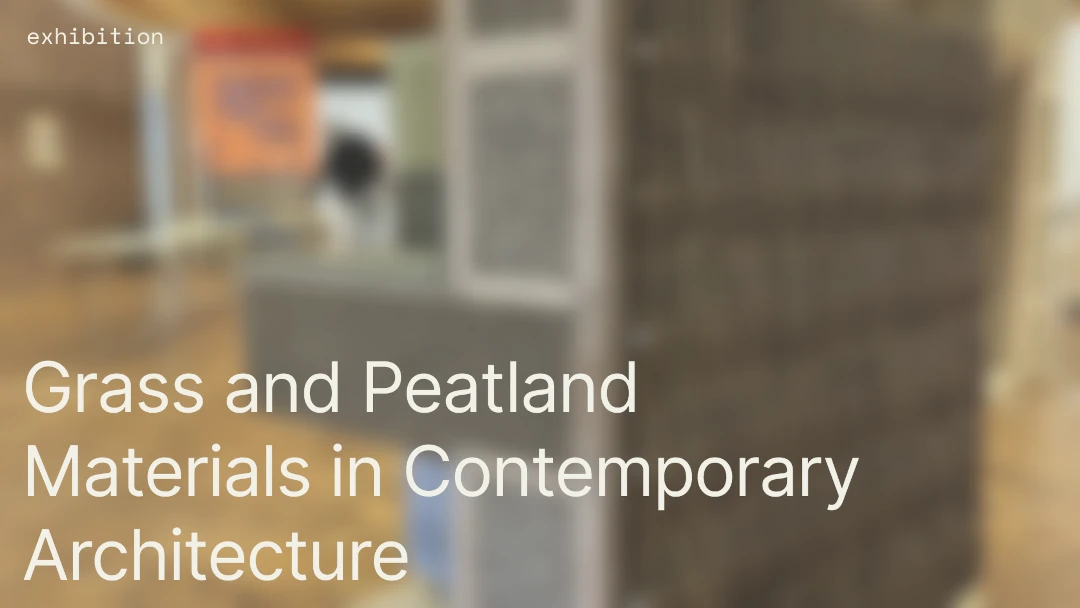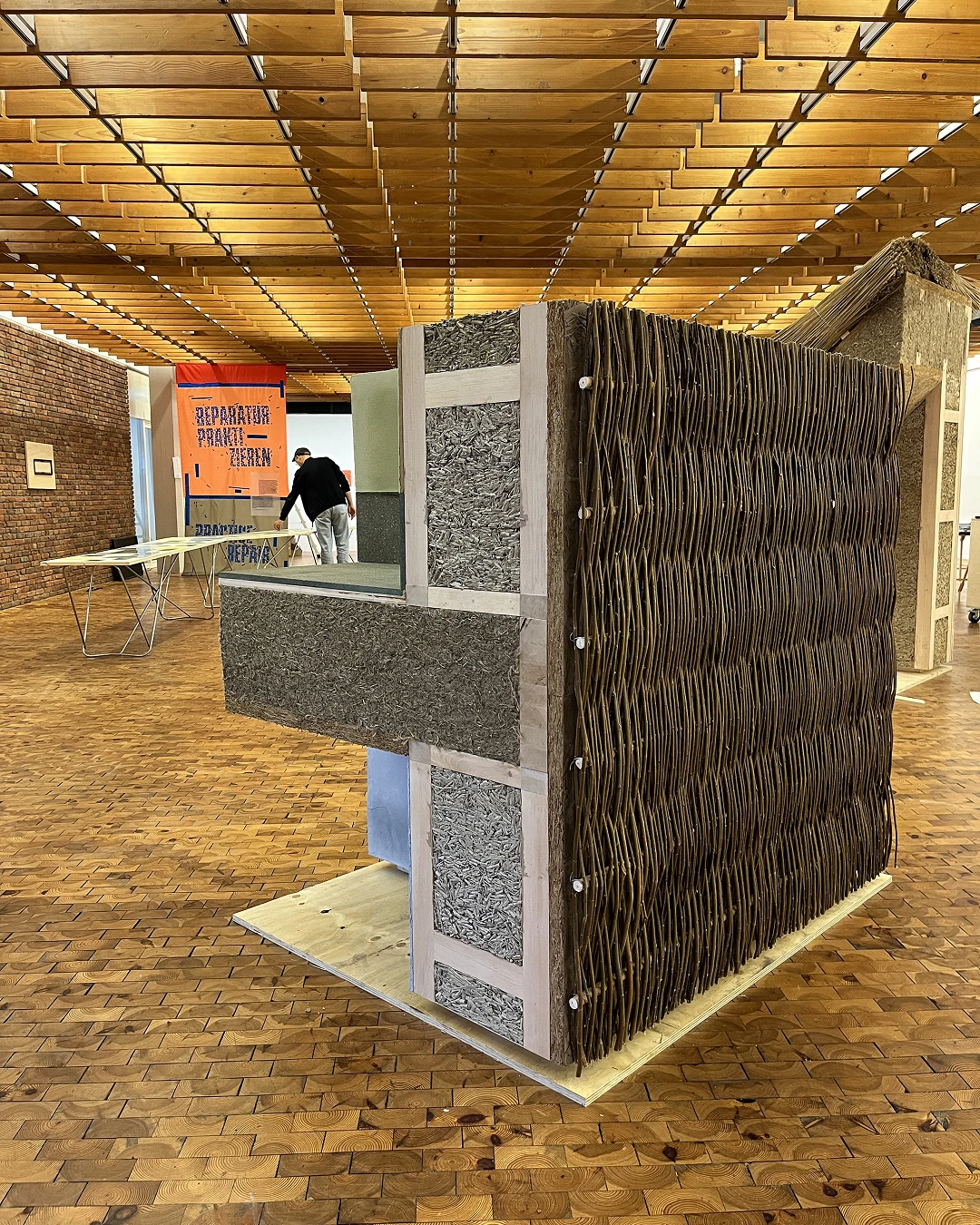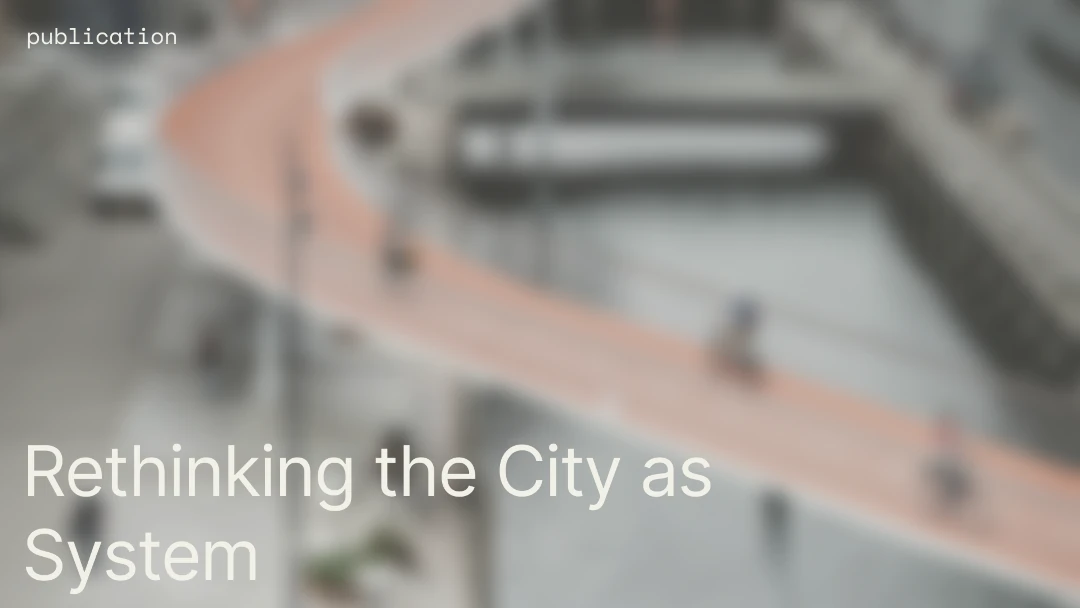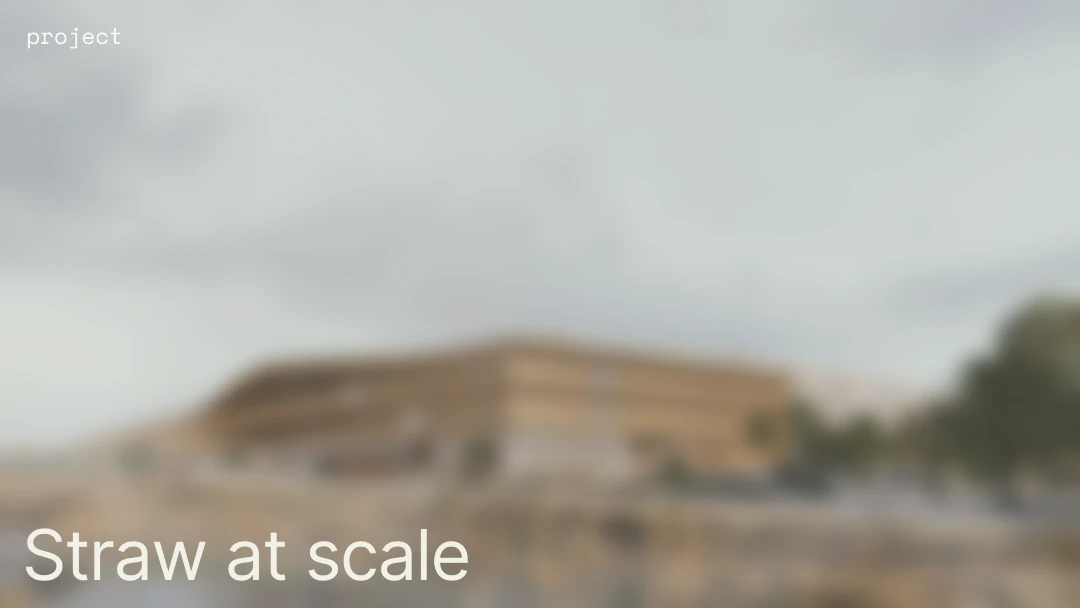
What does it mean to build within ecological limits? That question sits at the heart of The Great Repair, an exhibition first staged at the Akademie der Künste in Berlin, exploring how architecture might shift away from extractive models and towards practices rooted in maintenance, sufficiency and care.
The exhibition brings together more than thirty international projects from architecture, art and spatial practice, all engaging with repair as a design strategy. But it goes further—positioning repair as a political and material framework that can address the deep entanglements between environmental degradation and growth-baseddevelopment.
Among the exhibition’s built works is a construction prototype developed by Bauhaus Earth and Material Cultures, alongside various collaborators, made using materials grown on rewetted peatlands. Wetland grasses, Typha (cattail), and reed were harvested, processed and integrated into insulation and facade components. The project not only demonstrated the carbon storage potential of paludiculture systems but offered a grounded model for how building materials might emerge from restored ecologies, rather than mined or manufactured ones.

This work was made possible through partnerships with producersand fabricators already working with biobased insulation. Gramitherm—whose products are derived from grass fibres—was amongthe contributors, lending material knowledge and testing insight to support the development of new fibre panels. Their range of natural-fibre insulation is available to explore on revalu.

Throughout The Great Repair, the idea of care extends beyond maintenance to include the entire life of materials: how they are grown, handled, reused, and understood. Rather than treating products as fixed entities, the exhibition highlights a more responsive, iterative way of building—one that opens space for collaboration between designers, ecologists, and those who work with the land.




























